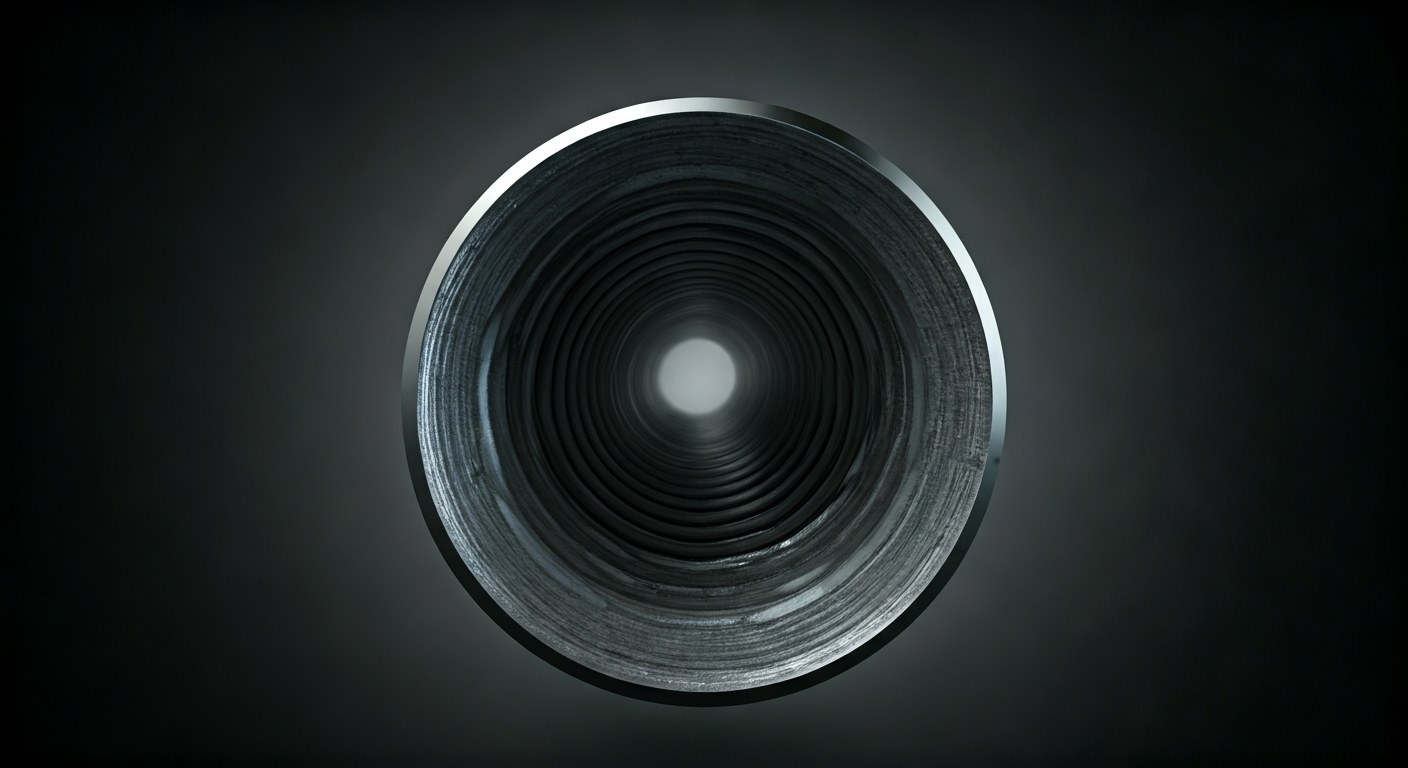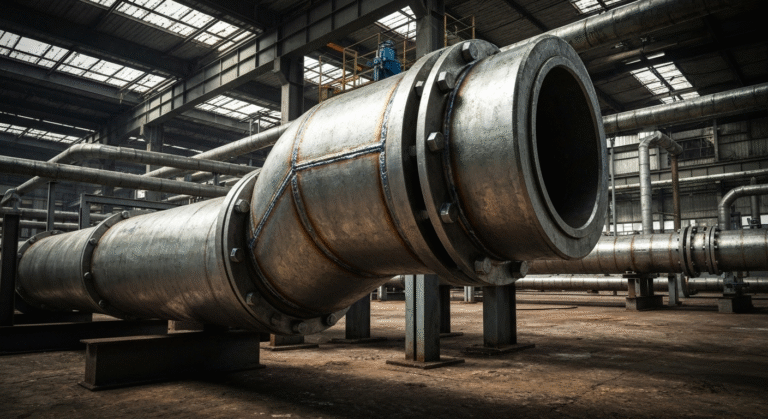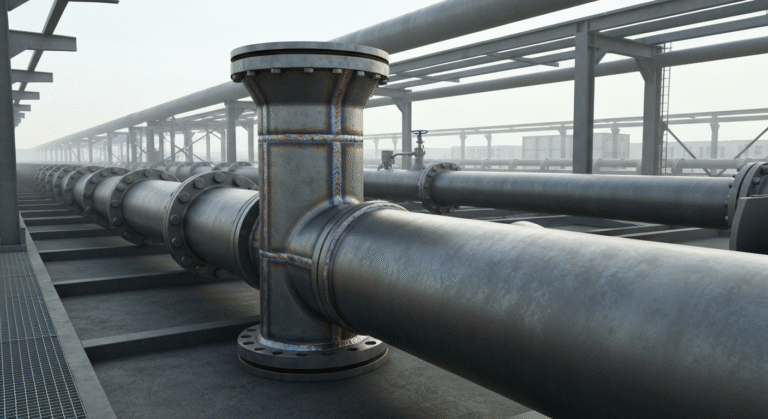-
منطقة ينزوانغ الصناعية، مقاطعة منغكون، مدينة تشانغتشو، مقاطعة خبي، الصين

أنابيب الصلب غير الملحومة مقابل الأنابيب الملحومة: شرح الاختلافات الرئيسية

أبرز الملامح الرئيسية
- تُصنع الأنابيب الفولاذية غير الملحومة من كتلة أسطوانية صلبة من الفولاذ، مما يضمن سُمكًا موحدًا للجدار ويزيل طبقات اللحام لتحقيق قوة وثبات فائقين.
- تتميز الأنابيب الفولاذية الملحومة بدرزات ملحومة مرئية، مما يوفر حلولاً فعالة من حيث التكلفة ولكن مع سلامة هيكلية أقل من الأنواع غير الملحومة.
- تختلف معدلات الضغط والمتانة بشكل كبير بين الأنابيب غير الملحومة وخيارات الأنابيب الملحومة.
- تتميز الأنابيب غير الملحومة بمقاومة ممتازة للتآكل، مما يجعلها مثالية للتطبيقات الحرجة في صناعات مثل النفط والغاز.
- ويختلف كلا النوعين من الأنابيب من حيث توفر حجم الأنبوب، والأداء في البيئات ذات درجات الحرارة العالية، والملاءمة في التطبيقات المتنوعة.
والآن بعد أن تم تحديد النقاط الرئيسية، دعونا نستكشف هذه الاختلافات بمزيد من التفصيل.
مقدمة
تُستخدم الأنابيب الفولاذية في العديد من الصناعات لأنها قوية ويمكن استخدامها بطرق عديدة. هناك نوعان رئيسيان: الأنابيب الفولاذية غير الملحومة والأنابيب الملحومة. ويأتي كل نوع بمميزاته الخاصة التي تعمل بشكل جيد في وظائف مختلفة. تتميز الأنابيب الفولاذية غير الملحومة، والتي يمكن أن تشمل أيضًا سبائك النيكل، بقوة أعلى نظرًا لعدم وجود طبقات ملحومة. الأنابيب الملحومة، من ناحية أخرى، تحتوي الأنابيب الملحومة على طبقات ملحومة بالمقاومة الكهربائية، مما يجعلها خيارًا جيدًا عندما تريد توفير المال.
من المهم أن يفهم الناس مدى اختلافها. فأشياء مثل مقاومة التآكل، وسُمك الجدار، ومدى قدرة كل أنبوب على التعامل مع درجات الحرارة المرتفعة لها أهمية كبيرة. تساعد هذه العوامل في تحديد النوع الذي يجب استخدامه في التطبيقات الحرجة. يمكن أن يعتمد اختيار الأنبوب المناسب على الحاجة إلى إيقاف التآكل، ومقدار سمك الجدار المطلوب، ومدى تعامله مع درجات الحرارة العالية.
نظرة عامة على أنابيب الصلب الملحومة وغير الملحومة

تلعب أنابيب الصلب دورًا كبيرًا في صناعات البتروكيماويات والغاز والبناء. تساعد هذه الأنابيب في السلامة وتوفير الوقت. لا تحتوي الأنابيب الفولاذية غير الملحومة على طبقات ملحومة. وهذا يجعلها أكثر اتساقاً ويمنحها متانة أفضل، وهو أمر جيد للأماكن ذات الضغط العالي. تُصنع الأنابيب الفولاذية الملحومة عندما يتم ربط حواف الشريط الفولاذي مع بعضها البعض باستخدام اللحام بالمقاومة الكهربائية. وهي خيار جيد ومنخفض التكلفة للأعمال التي لا تحتاج إلى نفس القدر من القوة.
لكل نوع نقاط قوة خاصة به. تعمل الأنابيب غير الملحومة بشكل أفضل في الظروف الصعبة للغاية. الأنابيب الملحومة جيدة للأعمال ذات الاحتياجات المشتركة. لذا، فإن أفضلها يعتمد على ما تحتاج إليه.
ما هي الأنابيب الفولاذية غير الملحومة؟
يتم إنتاج الأنابيب الفولاذية غير الملحومة عن طريق تحويل سبيكة فولاذية مستديرة صلبة (أو سبيكة) إلى أنبوب مجوف. هذه التقنية تلغي الحاجة إلى اللحامات الملحومة، مما يساهم في زيادة السلامة الهيكلية للأنبوب. وتخضع السبيكة لعملية ثقب باستخدام مغزل، مما يؤدي إلى تكوين قلب مجوف تتم معالجته بشكل أكبر من أجل دقة الحجم وسُمك الجدار.
تضمن طريقة التصنيع هذه أن تكون الأنابيب غير الملحومة ذات أبعاد متناسقة وجدران أكثر سمكًا. ونتيجة لذلك، فهي متينة للغاية وتتحمل ضغوطًا أعلى من الأنواع الأخرى. كما أن مقاومتها الاستثنائية للتآكل وموثوقيتها تجعلها مناسبة للصناعات الحرجة مثل النفط والغاز وتوليد الطاقة والمستحضرات الصيدلانية.
الميزة | الوصف |
|---|---|
أصل المادة | قضبان فولاذية مستديرة صلبة |
العملية الرئيسية | الثقب والمعالجة الحرارية |
المزايا | قوة أعلى، وجدران أكثر سمكًا |
تبرز الأنابيب غير الملحومة للتطبيقات التي تنطوي على درجات حرارة عالية وبيئات تآكل، مما يضمن الأداء الأمثل.
ما هي الأنابيب الفولاذية الملحومة؟
تُصنع الأنابيب الفولاذية الملحومة عن طريق تشكيل شرائط فولاذية في أنابيب مستديرة وربط الحواف باستخدام اللحام بالمقاومة الكهربائية (ERW). تخلق هذه الطريقة في صنع الأنابيب درزات مرئية، مما يجعلها مختلفة عن الأنابيب غير الملحومة. تبدأ العملية بتشكيل صفائح الصلب. ثم يتم استخدام الحرارة من التيارات الكهربائية لإغلاق الدرز بإحكام قبل الشحن.
نظرًا لأن تكلفة صنعها أقل من الأنابيب غير الملحومة، يتم اختيار الأنابيب الملحومة على نطاق واسع لأنابيب المياه وأعمال البناء والاستخدامات العامة الأخرى. كما أنها ذات جدران أرق. وهذا يجعلها أخف وزناً، لكنها لا تزال تتمتع بالقوة الكافية لمعظم الأعمال الشائعة.
ولكن قد لا تتعامل هذه الأنابيب مع الضغط بشكل جيد ولا تقاوم التآكل مثل بعض الأنواع الأخرى. وحتى مع وجود هذه المشاكل، فإن الطرق الأفضل لمخلفات الحرب من المتفجرات من مخلفات الحرب تجعل جودة التماس اليوم تتوافق مع قواعد الصناعة الكبيرة، مثل معايير ASME والنهايات الملولبة (TE)، لذلك لا يزال استخدامها في خطوط الأنابيب وغيرها من الأعمال آمنًا وموثوقًا به.
مقارنة عمليات التصنيع

تختلف طريقة صنع الأنابيب غير الملحومة عن طريقة صنع الأنابيب الملحومة. لصنع الأنابيب غير الملحومة، يستخدم الناس قطعة صلبة ساخنة تسمى البليت. يقومون بثقب هذه القطعة ولفها وتمديدها حتى تتحول إلى أنبوب مجوف. لا يوجد درز في هذا الأنبوب، وغالبًا ما يتم استخدام المعالجة الحرارية في هذه العملية.
من ناحية أخرى، تبدأ الأنابيب الملحومة كصفائح فولاذية مسطحة. يتم لف هذه الصفائح الفولاذية على شكل أسطوانة. وتقوم عملية لحام كهربائية عالية التردد بربط الحواف، مما يؤدي إلى إنشاء درز مرئي على طول الأنبوب. وغالباً ما تُفضل الأنابيب الملحومة ذات الأطراف العادية (PE) لبساطتها. وعادةً ما تكون الأنابيب غير الملحومة أكثر تكافؤاً في جميع الأنحاء وأقوى ضد الضغط. ولكن مع الأنابيب الملحومة، من الأسهل الحصول على أحجام وأطوال أكبر.
كيف تُصنع أنابيب الصلب غير الملحومة
ويبدأ إنتاج الأنابيب الفولاذية غير الملحومة بتسخين قطعة أسطوانية صلبة في فرن موقد دوّار حتى تصل درجة الحرارة إلى 2200 درجة فهرنهايت تقريبًا. بعد ذلك يتم ثقب البليت المتوهج من خلال مركزه باستخدام مغزل، مما يؤدي إلى تشكيل أنبوب مجوف. يتم تمديد المجوف ودحرجته في مصانع التحجيم لتلبية متطلبات الأبعاد المحددة، والتي يمكن أن تشمل أطوالاً عشوائية مزدوجة لتحسين الإنتاج.
يتبع ذلك معالجة حرارية لتحسين الخواص الميكانيكية مثل القوة والمرونة. واعتمادًا على متطلبات العملاء، قد يتم أيضًا سحب الأنابيب على البارد، مما ينتج عنه جدران أرق وأقطار أصغر. تختلف أنواع الأنابيب غير الملحومة، مما يجعلها متعددة الاستخدامات للصناعات التي تتطلب معايير صارمة للضغط والتآكل.
خطوة التصنيع | التفاصيل الرئيسية |
|---|---|
المواد الأولية | قضبان فولاذية أسطوانية صلبة |
عملية الثقب | شياق مغزل يصنع قضبان مجوفة |
التحجيم النهائي | تعديل الحجم في المطاحن حسب المواصفات |
ويضمن هذا التصنيع السلس أن تكون الأنابيب موثوقة في ظل الاستخدامات القصوى أو الحرجة.
كيفية إنتاج أنابيب الصلب الملحومة
تبدأ الأنابيب الفولاذية الملحومة بشريط فولاذي مسطح يسمى سكيلب. يتم تقطيعه بالحجم الذي تحتاجه. بعد ذلك، يتم لف الشريط، ويتم تجميع حوافه الطويلة معًا لجعلها مستديرة. في الأنابيب الملحومة بالمقاومة الكهربائية (ERW)، تمر الكهرباء عبر الحواف. فيتم إذابتها وربطها عن طريق تشكيل درز ملحوم.
ثم تتم معالجة التماس بالحرارة. هذه المعالجة الحرارية تجعل الأنابيب الملحومة أقوى وتتخلص من نقاط الضعف. تعتبر أنابيب المتفجرات من مخلفات الحرب من مخلفات الحرب جيدة لأنها أقل تكلفة وتعمل بشكل جيد في الأعمال التي ليست للتطبيقات الحرجة، مثل نقل المياه أو الغاز. تساعد معايير ASME في وضع القواعد، لذا يجب أن تكون الأنابيب آمنة وتتبع هذه الإرشادات.
تغيرت الأنابيب الملحومة بالمقاومة الكهربائية كثيرًا بمرور الوقت. أصبح التماس الآن يتمتع بمتانة أفضل ويحمي أكثر من الصدأ والتآكل. وبسبب هذه التغييرات، أصبحت الأنابيب الفولاذية الملحومة اختيارًا قويًا وموثوقًا للكثير من الاستخدامات الصناعية الجديدة.
الاختلافات الرئيسية في الأداء والتطبيق
الفرق الرئيسي بين الأنابيب غير الملحومة والأنابيب الفولاذية الملحومة هو مدى قوتها والطريقة التي يمكنك استخدامها بها. لا تحتوي الأنابيب غير الملحومة على أي علامات لحام. كما أنها تتمتع بمتانة أفضل ومقاومة جيدة للتآكل. وهذا يجعلها رائعة للأماكن ذات الحرارة العالية أو الضغط العالي.
عادةً ما تكون الأنابيب الملحومة أقل تكلفة وهي خيار جيد للأعمال التي تحتاج إلى ضغط متوسط فقط. ومع ذلك، قد لا تعمل بشكل جيد إذا كنت تستخدمها في ظروف قاسية. نظرًا لوجود مستويات مختلفة من القوة والدقة، عليك اختيار الأنبوب المناسب لاحتياجاتك. فكر في احتياجات عملك، والمكان الذي ستستخدم فيه الأنبوب، والتكلفة الإجمالية. وبهذه الطريقة، يمكنك الحصول على أقصى استفادة من الأنابيب غير الملحومة أو الأنابيب الملحومة، حسب الحالة.
تصنيفات القوة والمتانة والضغط والمتانة
تتمتع الأنابيب الفولاذية غير الملحومة بقوة أعلى لأنها مصنوعة بدون أي طبقات لحام. وهي ذات جسم موحد، مما يساعدها على تحمل الضغوط ودرجات الحرارة العالية بسهولة أكبر. وهذا يجعلها الخيار الأفضل للتطبيقات الحرجة، مثل نقل النفط والغاز. الأنابيب ذات الجدران السميكة أكثر متانة. هذه الجدران تجعل الأنابيب الفولاذية غير الملحومة موثوقة، حتى في ظروف العمل الصعبة.
ومن ناحية أخرى، تكون الأنابيب الملحومة أخف وزناً. هذا لأن جدرانها عادة ما تكون أرق. ومع ذلك، لا يمكن أن تصل الأنابيب الملحومة إلى نفس معدلات القوة أو الضغط التي يمكن أن تصل إليها الأنابيب الفولاذية غير الملحومة. يمكن أن تكون اللحامات في الأنابيب الملحومة نقاط ضعف. وهذا يمكن أن يؤثر على مدى جودة عملها عندما تكون تحت ضغط عالٍ. سواء اخترت أنبوبًا غير ملحوم أو أنبوبًا ملحومًا، يجب اختيار كل أنبوب فولاذي كربوني بناءً على ما تحتاجه لعملك.
باختصار، يتم استخدام الأنابيب غير الملحومة عندما تحتاج الصناعة إلى قوة ومتانة أعلى. وفي المقابل، غالبًا ما يتم اختيار الأنابيب الملحومة عندما تكون الاحتياجات الرئيسية هي توفير التكاليف والوزن الأخف والأداء المنتظم.
الاستخدامات الشائعة في الصناعة في سنغافورة
تلعب أنابيب الصلب، مثل الأنواع غير الملحومة وغير الملحومة، دورًا كبيرًا في صناعات سنغافورة. يستخدم الناس الأنابيب الفولاذية غير الملحومة عندما تكون هناك حاجة لدرجات حرارة عالية وفي الأماكن التي بها الكثير من التآكل. يتم اختيار هذه الأنابيب لأنها تتمتع بمقاومة ممتازة للتآكل.
- قطاع النفط والغاز: تنقل الأنابيب غير الملحومة المواد البتروكيماوية وتساعد في الأعمال التي تحتاج إلى التعامل مع الضغط العالي.
- شبكات الغاز: هناك أنابيب ملحومة تستخدم لبناء خطوط أنابيب الضغط المنخفض.
- البنية التحتية والإنشاءات: تدوم أنابيب الفولاذ المقاوم للصدأ لفترة طويلة. تُستخدم لدعم هياكل المباني.
- التطبيقات البحرية: تعتبر الأنابيب غير الملحومة رائعة لمحاربة التآكل لذلك يتم استخدامها في السفن وفي الأماكن تحت الماء.
هناك مجموعة واسعة من خيارات المواد للأنابيب. وتشمل الفولاذ المقاوم للصدأ والفولاذ الكربوني. توفر الأنابيب الملحومة وغير الملحومة متانة جيدة وتساعد في الحفاظ على ثبات خطوط الأنابيب. ولهذا السبب، تلجأ العديد من الشركات إلى هذه الأنابيب عندما ترغب في توفير المال مع الحصول على أداء عالٍ في نفس الوقت. فهي تضمن حصول الصناعات على ما تحتاجه لأنواع كثيرة من الوظائف، من التعامل مع التآكل إلى نقل البتروكيماويات.
الخاتمة
باختصار، من المهم معرفة الاختلافات الرئيسية بين الأنابيب غير الملحومة والأنابيب الملحومة عندما تحتاج إلى الاختيار بينهما. سوف تصادف كلا النوعين في أشياء مثل البناء وصناعة المنتجات. توفر الأنابيب غير الملحومة قوة جيدة ومتانة عالية. وهي تعمل بشكل جيد في الأماكن ذات الضغط العالي. يمكن للأنابيب الملحومة أن تكون جيدة إذا كنت تريد خيارًا يوفر المال ولا يزال يؤدي المهمة للعديد من الاستخدامات اليومية.
انظر إلى أشياء مثل كيفية صنع الأنبوب، ومدى جودته، وما تحتاج إليه قبل أن تختار أحدها. فكّر فيما تريد، حتى تحصل على النوع الذي يناسب احتياجاتك بشكل أفضل. إذا كنت بحاجة إلى مساعدة إضافية لاتخاذ القرار، يمكنك التحدث إلى شخص ما للحصول على المشورة. سيساعدك استخدام الأنبوب المناسب في إنجاز المهمة بشكل جيد. هذا جيد لعملك ويمكن أن يوفر عليك المتاعب لاحقاً.
الأسئلة الشائعة
أيهما أفضل لتطبيقات الضغط العالي: الأنابيب الفولاذية الملحومة أم غير الملحومة؟
الأنابيب غير الملحومة رائعة لأشياء مثل أعمال الضغط العالي. وذلك لأنها لا تحتوي على درزات تضعفها. كما أنها تدوم لفترة أطول وجدرانها أكثر سمكاً. أما الأنابيب الملحومة، من ناحية أخرى، فتكلفتها أقل. ولكنها تحتوي على درزات. هذا التماس يجعلها غير قوية ومعدلات ضغطها أقل، كما يمكن أن تكون الأنابيب الملحومة أضعف عند التماس.
هل الأنابيب غير الملحومة أغلى من الأنابيب الملحومة في سنغافورة؟
نعم، عادةً ما يكون سعر الأنابيب غير الملحومة أعلى من الأنابيب الملحومة في سنغافورة. والسبب هو أن الطريقة التي يصنع بها الناس الأنابيب غير الملحومة أكثر تعقيدًا. تتمتع هذه الأنابيب أيضًا بقوة أعلى. ولكن، يجب أن تنظر إلى فرق السعر بناءً على ما تحتاج إلى الأنابيب من أجله. فكر في أشياء مثل الضغط والتآكل عند اختيارك.
هل يمكن استخدام الأنابيب الملحومة في البيئات المسببة للتآكل؟
تُستخدم الأنابيب الملحومة في الأماكن التي يوجد بها تآكل، خاصة إذا كانت الأنابيب مصنوعة من الفولاذ المقاوم للصدأ أو سبائك خاصة. على الرغم من أن الأنابيب الملحومة لا توفر نفس مقاومة التآكل التي توفرها الأنابيب غير الملحومة، إلا أن اختيار السبيكة المناسبة يمكن أن يساعد في حمايتها من التلف الكيميائي.
كيف يمكنك تحديد الأنبوب غير الملحوم مقابل الأنبوب الملحوم بصرياً؟
لا تحتوي الأنابيب غير الملحومة على درز لحام مرئي على السطح. أما الأنابيب الملحومة فلها درزة تمتد بطول الأنبوب. يمكنك أيضًا النظر إلى القطر، أو OD، للمساعدة في التمييز بينهما. المظهر الخارجي لهذه الأنابيب هو طريقة أخرى لمعرفة الفرق بين الأنابيب غير الملحومة والأنابيب الملحومة.
ما هي المعايير التي تنظم أنابيب الصلب الملحومة وغير الملحومة في سنغافورة؟
في سنغافورة، هناك قواعد لأنابيب الصلب الملحومة وغير الملحومة. تحتاج هذه الأنابيب إلى اتباع القواعد التي وضعتها مجموعات تسمى ASTM و ASME. يمكن أن تتعلق هذه القواعد بأشياء مثل الحجم المناسب، بما في ذلك الحجم الاسمي للأنابيب (NPS)، ونوع المواد التي يجب استخدامها، ومقدار الضغط الذي يمكن أن تتحمله الأنابيب. وبهذه الطريقة، يعرف الناس أن الأنابيب آمنة للصناعات لاستخدامها.


